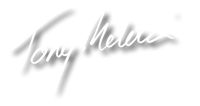An Alternative Asset Class - Intro to MHC
I’d like to share with you a property investment strategy that has returns of 10% to 12% positive cash flow and requires as little as USD 50,000 to start (in some cases as low as $30,000).
Let me explain.
Those who know me know I’m always on the lookout for high yield cash flow investment opportunities. Unlike Australia, rental properties in the USA are cash flow positive.
This is nothing new, as I wrote about this back in 2017 when I shared my plans and moved to the USA.
It was only recently that I came across an alternative asset class with low entry costs and high returns. To be honest, I came across this over a year ago but I never bothered to research it because I was still thinking like an “Aussie Property Investor.”
Once I got over my prejudices and took a good look at the numbers, I uttered that oh so common regretful phrase— “Wish I knew about this earlier!”
The asset class I discovered is Manufactured Housing Communities or MHCs. An MHC is often a gated community, with spaces for 100 or more homes. Residents of the community can either buy or rent a home in the community. MHCs generally fall in one of two categories, family MHCs with no age restrictions, and communities specifically for those 55 and over.
Now here’s the key—
even if they buy the home, they do NOT own the land.
And that was my stumbling block and why I initially rejected this concept. As any Aussie property investor will tell you, the value is in the land! Heck, I’ve even written books about this stuff!
But … the land is not important. Not for this strategy. Now, in case you think I’ve suddenly recanted all the wisdom espoused in my books, I haven’t. Hear me out.
This is a passive income strategy, not a capital gains strategy.
You see, when investing in Australian property the rent rarely covers the costs. We call this negative gearing, which simply put, means you lose money and get a tax break on the loss. How do you make money with negative gearing? You wait for the property (or more correctly the land) to appreciate. Eventually, the property value increases and you’ve “made a profit.”
But an MHC investment generates immediate cash flow. The speed of the process is staggering. Usually, the deal is done in a month and the property rented. Within 4 to 6 weeks you start receiving your monthly income. Simple.
You might wonder, “how can it be so fast?”
Several reasons:
Efficient home construction all under one roof.
The properties are built in a factory to specified standards (ironically, a much better standard than typically built homes). Factory construction has all materials and workers in one location and is never hindered by the weather = faster construction.
Tenants are easy to come by due to the high quality of the home and the lower cost of rents (leases on MHC properties are usually cheaper than a condo, and MHC are standalone homes with gardens and parking.)
A limited supply of affordable housing in the USA.
What about the value of the property, does it ever go up?
Yes, the home value does increase but that’s not included in the ROI, if it happens it’s a bonus. The question that should be asked is, “Can the home be easily sold?” And the answer is also “yes.”
It can be sold on the public market like any property. The firms I deal with have a buy-back option to repurchase the homes for the same price you paid for it. So, in short, you can get your capital out fairly easily and due to the low cost, it’s more liquid than a typical property for the simple reason that there are more people with $50k to invest than there are with $500k.
Ease the Burden
Why am I sharing this now? I know that some of my readers are suffering in the current social and economic turmoil in the world today. MHCs provide a recession-proof investment for the simple reason that in times of difficulty people downsize. I believe that adding some MHC cash flow properties to a portfolio is a great way to diversify risk and ease the burden of lost income from other asset classes.
So that’s my brief introduction to MHCs. If you want to find out more about this opportunity, I have a team here in the USA with a turnkey solution for investors. Everything is taken care of, all maintenance, tenanting, insurance—everything.
For more information, visit our site passivebanc.com and the FAQs and How it Works.
Comment below or reach out via the Contact Us page and I’ll be happy to answer any questions you have.
In the meantime, stay well and stay safe.
Cheers







